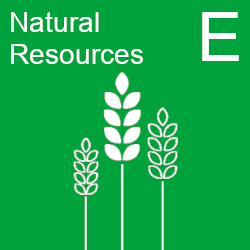Short Description
This indicator shows changes in the percentage of annual softwood and hardwood growth in England that is harvested annually. Separate statistics are available for softwood, hardwood, and both in total. This indicator helps us to better understand the levels of, and trends in, the economic productive utilisation of English timber resources as a part of sustainable forest management policies and practices.
The underlying data sources are Accredited Official Statistics from Forest Research on UK Wood Production and Trade and National Forest Inventory forecasts of increase (increment) in the volume of wood that grows in England.
Readiness and links to data
Data on the percentage of the annual growth of trees in English woodlands that is harvested are published in the Forestry Commission’s Key Performance Indicators Reports. The total volume of timber harvested that forms a component of this indicator is shown in the report for indicator E6: Volume of timber brought to market per annum from English sources.
Indicator components
Figure E5: Percentage of the annual growth of trees in English woodlands that is harvested, 2010 to 2023
Table E5: Percentage of the annual growth of trees in English woodlands that is harvested, 2010 to 2023
| Year | Hardwood | Hardwood and softwood | Softwood |
|---|---|---|---|
| 2010 | 12.60 | 35.60 | 67.00 |
| 2011 | 12.80 | 37.30 | 70.80 |
| 2012 | 12.60 | 38.40 | 73.70 |
| 2013 | 12.60 | 42.20 | 87.00 |
| 2014 | 12.70 | 44.10 | 91.70 |
| 2015 | 13.40 | 42.00 | 85.30 |
| 2016 | 14.20 | 43.80 | 88.80 |
| 2017 | 15.90 | 40.00 | 76.90 |
| 2018 | 18.00 | 43.20 | 81.80 |
| 2019 | 18.70 | 42.90 | 79.90 |
| 2020 | 17.80 | 40.20 | 74.60 |
| 2021 | 17.70 | 38.10 | 69.50 |
| 2022 | 15.70 | 34.20 | 66.70 |
| 2023 | 15.30 | 35.10 | 69.70 |
Trend description for E5
The percentage of softwood growth in England which is harvested has fluctuated between 66.7% and 91.7% over the 14 years for which these data are reported. The latest year's figure is similar to that reported in 2010 when the time series began (69.7% and 67.0% respectively). These results reflect continued sustainable management of softwood resources. The percentage of hardwood growth which is harvested has increased slightly, although it remains much lower than the equivalent softwood figure (ranging between 12.6% and 18.7% over the same 14-year period), reflecting a lower level of active management of broadleaved woodland for timber supplies.
Assessment of change
There has been a decrease (deterioration) in the percentage of total annual growth of trees in English woodlands that is harvested (hardwood and softwood combined) over the short- and medium-term assessment periods. However, there has been little or no change over the long-term assessment period.
Change since 2018 has also been assessed, and in this instance, both the baseline year and the results for this assessment (a deterioration) are the same as those for the short-term assessment.
Further information on this assessment, along with details on the methodology, is provided in the Assessment background page. Summaries by 25 Year Environment Plan goal and information on indicator links are presented in the Assessment results pages.
Table E5: Assessment of change
| Component | Subcomponent | Period | Date range | Percentage change | Smoothing function | Assessment of change |
|---|---|---|---|---|---|---|
| E5 | Hardwood and softwood | Short term | 2018 to 2023 | -18.75 | Unsmoothed | Deterioration |
| E5 | Hardwood and softwood | Medium term | 2013 to 2023 | -16.82 | Unsmoothed | Deterioration |
| E5 | Hardwood and softwood | Long term | 2010 to 2023 | -1.40 | Unsmoothed | Little or no change |
Note that percentage change in Table E5 refers to the difference seen from the first to last year in the specified date range.

